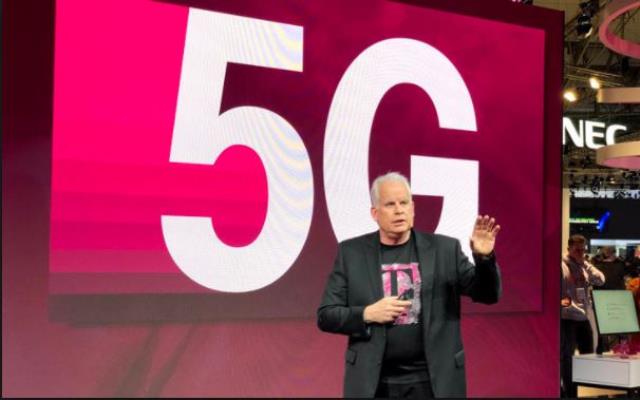T-Mobile has added 452,000 monthly paying phone subscribers in the first quarter of 2020, thanks to a surge in demand for cheaper phone services as people work from home amid coronavirus lockdowns.
 The company’s post-paid phone churn, or the rate of customer cancellations, for the first-quarter was 0.86 percent, compared to 0.88 percent last year, reflecting store closures and nationwide stay-at-home orders, Reuters reported.
The company’s post-paid phone churn, or the rate of customer cancellations, for the first-quarter was 0.86 percent, compared to 0.88 percent last year, reflecting store closures and nationwide stay-at-home orders, Reuters reported.
The company did not give a full-year outlook, citing uncertainty linked to the pandemic, following in the steps of its competitors AT&T and Verizon Communications.
T-Mobile CEO Mike Sievert said he expected budget-constrained customers to be attracted to the company’s mobile phone services.
“I expect that AT&T and Verizon customers will most certainly be looking to get out from under their high monthly bills in search of a better value,” Sievert said during an earnings call.
T-Mobile also did not reveal the demand for 5G services though it launched 5G in December 2019.
The company said it was expanding its 5G rollout as demand continues to rise during the lockdowns and that it built over 1,000 network sites in April. T-Mobile Chief Technology Officer Neville Ray said the network is “growing like a weed.”
Expanding 5G Network Capabilities
# Start to deploying 5G sites in Philadelphia and New York City using Sprint’s 2.5 GHz mid-band spectrum on T-Mobile’s 5G network
# After launching America’s first nationwide 5G network on 600 MHz spectrum in Dec 2019, it expanded 5G footprint across an additional 1,600 sites in Q1 2020 and ramped pace to 1,000 sites in April 2020
# 600 MHz 5G covers 215 million people including the cities of Detroit, St. Louis and Columbus with the Bay Area added this week and more cities coming online soon
# Over 50 million New T-Mobile devices have access to the 600 MHz LTE network and 5G access is being made available to Sprint customers
The company posted a marginal rise in revenue to $11.1 billion during the first quarter from a year earlier.
T-Mobile had closed 80 percent of its stores to comply with the lockdowns. However, an increase in service revenue offset the fall in demand.
The report was the first since T-Mobile closed its $23 billion merger with Sprint Corp in April and switched its executive leadership.
The company said the coronavirus pandemic would continue to negatively impact in the second quarter while it integrated Sprint’s network.
T-Mobile expects to add up to 150,000 net monthly phone subscribers in the second quarter of 2020. The company said that its merger-related costs would range from $500 million to $600 million before taxes and its COVID-19 pandemic-related costs would be between $450 million to $550 million before taxes.
Last week, T-Mobile said in a preliminary report that Sprint lost 348,000 monthly phone subscribers in the first quarter, more than double the amount of Sprint’s subscriber losses from last year.





